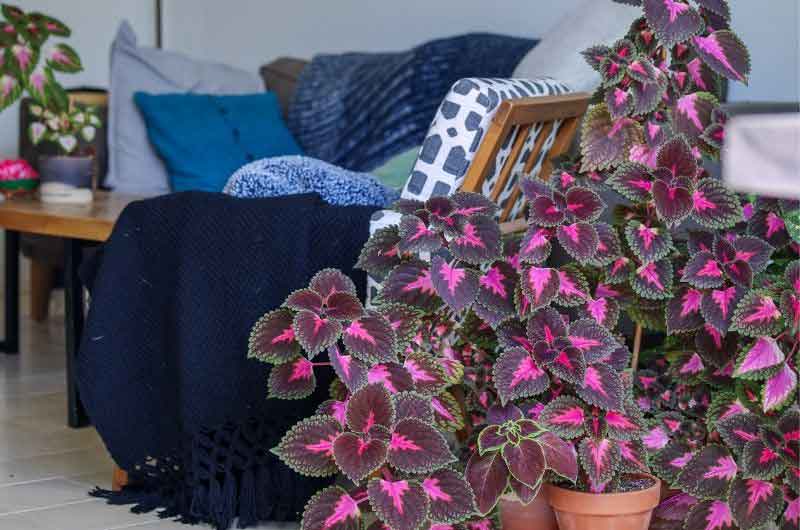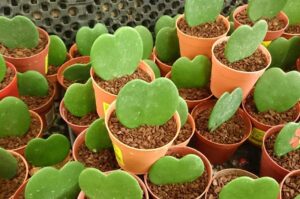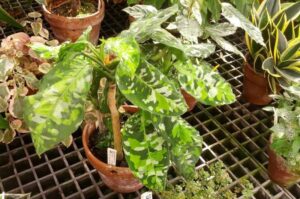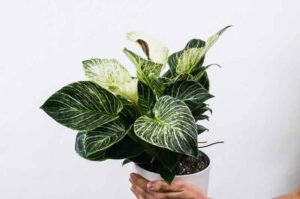Why Is My Coleus Wilting? (10 Causes and their Solutions)
Coleus is one of the best houseplants beginners can grow, because of its low maintenance and easy-to-grow nature. Even if this is an easy-to-grow plant, sometimes their multicolored foliage show drooping and wilting symptoms.
In this article, we will discuss all possible reasons for which your Coleus plant is wilting, and also discuss its solutions.
The most common cause of a Coleus wilting is root rot caused by overwatering. Few other problems causing this plant to wilt are underwatering, inefficient lighting, issues with the potting mix, root-bound plants, lack of nutrition, and several others.
Some other reasons as well, like Downey Mildew is a common infection that occurs under the leaves of the Coleus plant for which they die. If the plant is not kept in sufficient sunlight, it starts to pale, at the same time, too much sunlight can also cause the plant to wilt.
Take a deeper look at the factors which are wilting your Coleus.

10 Causes of Coleus wilting and Their Solutions
Here are 10 different causes which are wilting your Coleus plant.
1. Overwatering
If you water your Coleus way more than it needs, it will cause the leaves to become yellow. Yellowing of leaves is the initial symptom of the overwatered plant which can further lead to more severe scenarios.
If you keep overwatering the plant, eventually, the leaves will start to brown and the root will rot. The rotten root is known to wilt the plant, ultimately killing it.
You can save your Coleus from such a situation if you follow the optimum requirements of watering the plant.
Coleus thrives pretty well in the shaded region. This also means that the soil does not need much sun. as a result, if you overwater the plant, the bulk of water remains inside the pot and is not able to drain properly.
This stagnation of water over a long period of time causes the root to rot. Since the drainage of the soil is not very well, you should avoid overwatering your plant if you want it to stop wilting.
Your Coleus might be wilting because it is in a waterlogged stage. So, if you want it to stop, water consciously and also makes sure that the potting mix or soil you are using has good drainage.
You can always check the soil by digging your finger into the pot. If it is dry, water the plant otherwise, leave it for a few more days. You can even fix the soil using compost or by adding sand to the soil.
2. Underwatered plant
The symptoms of overwatering and underwatering your Coleus are quite the same. In both cases, the plant starts yellowing. However, you can identify your plant when it’s underwatered by seeing if it has dried as well.
With overwatering, the leaves become yellow, droop, and the plant wilts. But with underwatering, the leaves start yellowing and eventually dry and fall off. So, a possible reason for the wilting of your Coleus plant can also be underwatering.
Checking the soil regularly, whether there is enough moisture present or not will definitely help your plant to stay hydrated.
Also adding a self-watering pot is also a good idea, which automates the process and reduces your part of work. You can know more about these self-watering pots by clicking HERE.
If you want to know about the watering techniques for your Coleus plant, check out this video about the Do’s and Don’ts of the Coleus plant.
3. Inefficient lighting
Much like any other plant, it is essential to have desirable lighting conditions to prevent your Coleus plant from wilting.
High-intensity light or too much sunlight is bad for your Coleus. If you have kept the plant too close to the window, move it to a place with a good amount of shade.
Similarly, way too dark indoors can cause the plant to lose its color. You can solve this problem by using artificial lighting for your Coleus.
Inefficient lighting will cause several problems in your Coleus plant. Here are some problems you will face:
Losing color – if there is more than required sunlight, your Coleus leaves will turn pale and lose all their color. Eventually, the older leaves will start to wilt and fall off. Coleus is so cherished among the gardeners for its colorful foliage. If it loses all its colors, it will be a gardener’s nightmare!
Turning White – when your plant gets sunscald, it turns white. With too much exposure to the sunlight, the Coleus leaves are bleached and they lose all their colors. This is a common symptom for this plant, especially in summers. The high amount of sunlight breaks the chlorophyll making the leaves pale. To prevent this, you can move the plant to a shadier place and use artificial lighting or indirect lighting.
4. Wrong Selection of Potting Mix
If you use a potting mix that has very little drainage, it will cause the soil to get waterlogged and the plant will wilt. Similarly, if the potting mix is very much water retentive, the plant will dry faster and wilt.
Coleus plants need fertile, well-draining soil where the water does not get stagnated causing the root to rot and die.
5. Wilting due to root bound
Coleus plants are extremely fast growers. Wilting can also cause when your plant becomes root-bound, that is the roots get constricted inside the pot with not enough space to grow properly.
This can cut off the required nutrition. When the plant becomes root-bound and there is not enough space left, the roots tend to come out vertically from the pot.
To stop this, you have to shift your plant to a bigger container where there is enough space for the roots to grow even more.
In this process, you have to take out the plant carefully and massage the roots. Take a pot that is two inches higher than the previous one and place the plant at the same height.
Also, to prevent root-bound you need to be very frequent with the propagation of your Coleus plant. They need to be propagated more often compared to other plants.
6. Lack of nutrition
Wilting can also be caused due of lacking nutrition. In this case, the soil might be inappropriate and needs to be tested to make sure that the plant doesn’t die.
If your plant is lacking nutrition, it will turn yellow-brown and start to wilt. You can prevent this by adding good compost or fertilizers and boosting the quality of the soil.
7. Pests and Infections
A very common infection in the Coleus plant is Downey Mildew. This causes the leaves to droop, making the plant wilt. It is a fungal infection mainly seen in the undersides of the leaves.
Plants infected with this disease often do not grow completely and get stunted. In such plants, wilting is a common symptom. The color of the leaves is distorted and there are angular lesions on the leaves.
To identify this fungal infection, check for sporangia or a purplish-gray growth under the leaves.
If you want to save your plant, inspect the infected leaf and cut it off as soon as possible, otherwise, saving your plant will be difficult.
To overcome the problem and reduce future possibilities of this disease, you have to take good care of the plant.
8. Physical Injury
Your Coleus might be wilting due to any kind of physical injury it suffered at any point. If a tip broke off, or you got a damaged plant or foul seeds from the nursery itself, wilting can occur.
9. Wilting after repotting
Wilting after repotting the plant is a common cause of transplant shock. The roots go into a state of shock and cannot absorb an adequate amount of water.
You have to give the plant some time to adjust to the new habitat. This way it will eventually stop wilting.
Also, water the plant thoroughly after repotting it.
10. Temperature
When the Coleus is faced with extremely cold temperatures, the plant limps and gets wilted. It has similar symptoms as when the soil is overwatered and gets waterlogged.
In colder regions and climates, the draining of Coleus plants should not be more efficient as there is a higher chance of waterlogging. So, you can try using artificial light to create the optimum temperature or use well-drained soil to make your Coleus grow properly.
So, these were some of the reasons why your Coleus plant is getting wilted. You can prevent wilting of the plant by taking care of it properly. Take a look at this Coleus Care guide to prevent your Coleus from wilting.






